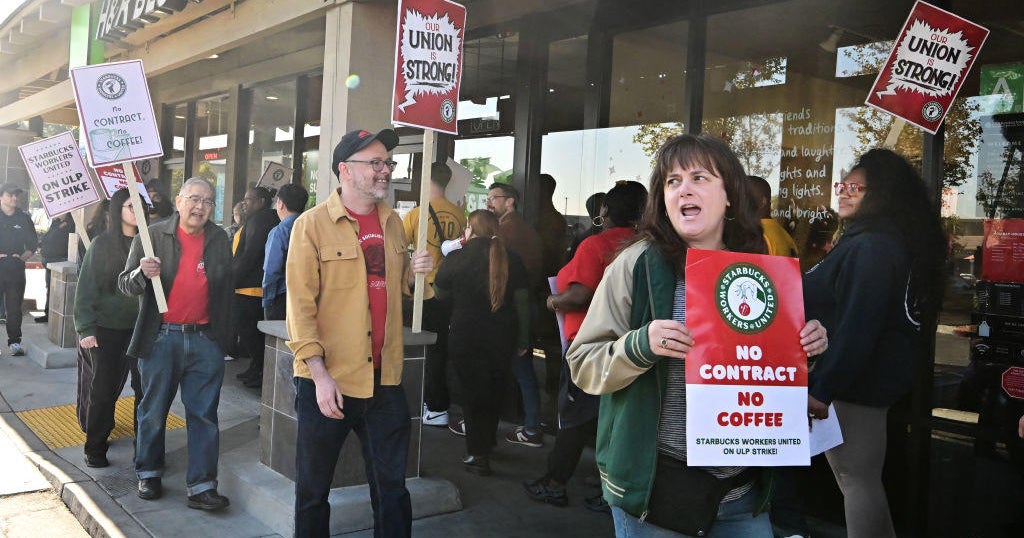U.S. prices jumped 6.8% in November—steepest rise since 1982
Consumer prices jumped last month at their fastest rate since 1982 as surging inflation in items ranging from food to housing showed no signs of abating.
The Consumer Price Index, which tracks the price of a broad range of goods, rose 0.8% November and is up 6.8% from a year ago, the Labor Department said on Friday. Core inflation, which strips out volatile food and fuel prices, increased 0.5% last month and 4.9% over the last year.
The price increases hit a broad range of goods, with food, shelter, new and used cars, and gasoline all showing the largest jumps. Energy costs last month soared 33% over the last year, food costs rose 6%, and used car and truck prices climbed 31%.
For consumers under the age of 40, the recent run-up in prices represents the most severe bout of inflation in their lifetime. The last time Americans saw persistent price increases was in the 1970s, when U.S. oil supplies were disrupted, initially during an embargo by Middle Eastern producers.
Inflation leaped from below 3% in 1972 to over 13% in 1979, prompting the Federal Reserve to ratchet up interest rates to as high as 20%. By 1982, inflation had fallen back into the single digits, but the experience left many policymakers scarred and shaped monetary policy for decades.
The persistence of high inflation this year has surprised the Fed and its chairman, Jerome Powell, who had for months described the sharp rise in prices as "transitory" and a short-term consequence of snarled supply chains. But two weeks ago, he signaled a shift, implicitly acknowledging that high inflation has endured longer than he expected.
Rubeela Farooqi, chief U.S. economist with High Frequency Economics, expects inflation to remain elevated in the coming months, although she thinks prices are likely to moderate over time.
Fueling that inflation has been a mix of factors resulting from the swift rebound from the pandemic recession: a flood of government stimulus, ultra-low rates engineered by the Fed and supply shortages at factories in the U.S and abroad. Manufacturers have been slowed by robust customer demand, COVID-related shutdowns, and overwhelmed ports and freight yards.
"Some of the fourth quarter's high inflation is due to supply chain problems and the lag between recovering consumer demand and recovering business production," PNC senior economist Bill Adams said in a note. "But other sources of recent inflationary pressure look likely to persist," he added, such as the runup in home prices that started last year.
Food, fuel, cars
These are the categories driving inflation higher in November, according to the Labor Department, along with their year-over-year price increases.
- Fuel oil - 59.3%
- Gasoline - 58.1%
- Used cars and trucks - 31.4%
- New vehicles - 11.1%
- Food - 6.1%
- Apparel - 5.0%
- Shelter - 3.8%
- Transportation services - 3.9%
Surging prices have also been a drag on consumers. While worker pay also has risen at a healthy clip this year as employers jockey to attract workers in a tight labor market, wage growth has not kept up with price increases.
Nearly half of Americans say that higher prices are causing financial hardship, according to a Gallup survey released last week, with 3 in 10 households making under $40,000 saying that inflation has caused a decline in their standard of living.
Higher prices are also falling harder on rural households and those without a college education, an analysis from Bank of America found.
Even as prices soar, economists expect inflation to ease in the coming months, driven by falling oil prices and uncertainty over the COVID-19 Omicron variant.
"[W]ith energy prices falling sharply in recent weeks, last month probably marked the peak," Paul Ashworth, chief U.S. economist at Capital Economics, said in a report.
The Associated Press contributed reporting.



